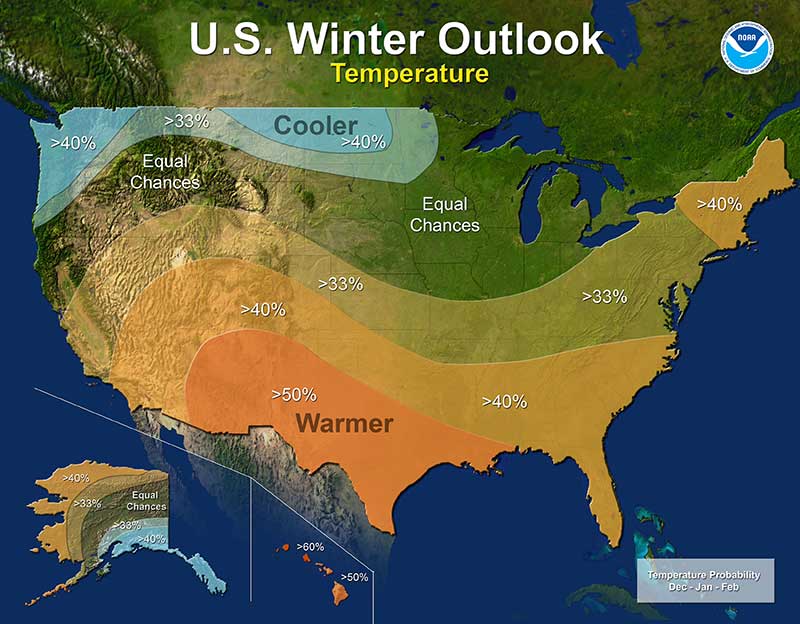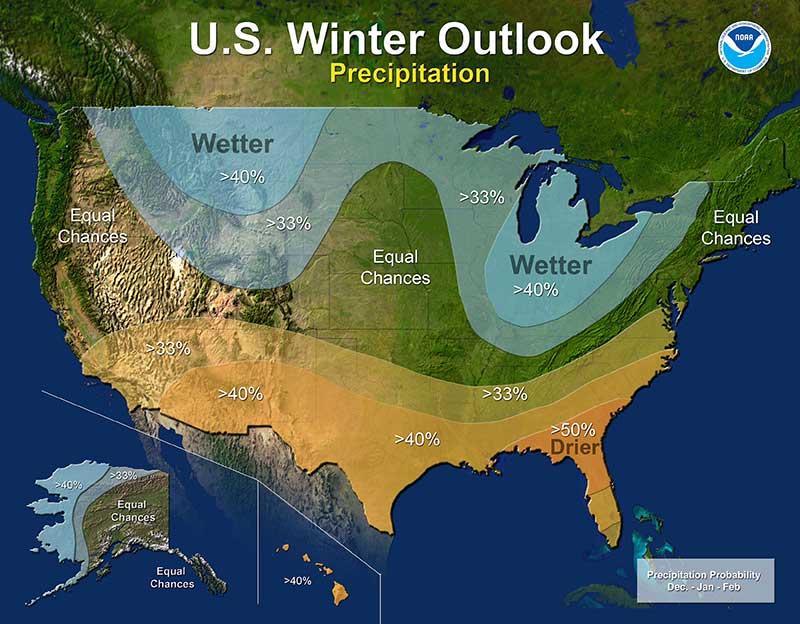NOAA predicts winter conditions in 2017 U.S. Winter Outlook
Forecasters at the National Oceanic and Atmospheric Administration (NOAA) released the 2017 U.S. Winter Outlook, which says La Niña is potentially emerging as the biggest wildcard in how this year’s winter will shape up. According to NOAA, La Niña has a 55 to 65 percent chance of developing before winter sets in.
“If La Niña conditions develop, we predict it will be weak and potentially short-lived, but it could still shape the character of the upcoming winter,” says Mike Halpert, deputy director at NOAA’s Climate Prediction Center. “Typical La Niña patterns during winter include above-average precipitation and colder-than-average temperatures along the Northern Tier of the United States and below-normal precipitation and drier conditions across the South.”
Other factors that could impact winter weather include the Arctic Oscillation, which influences the number of arctic air masses that penetrate into the South and is difficult to predict more than one to two weeks in advance, and the Madden-Julian Oscillation, which can affect the number of heavy rain events along the West Coast, NOAA adds.
The 2017 U.S. Winter Outlook also forecasts wetter-than-average conditions across most of the northern United States and drier-than-normal conditions across the southern United States. It forecasts warmer-than-normal conditions across the southern two-thirds of the continental United States, along the East Coast, across Hawaii and in western and northern Alaska, but forecasts below-average temperatures along the Northern Tier of the United States, from Minnesota to the Pacific Northwest and in southeastern Alaska.
According to the report, the rest of the country has an equal chance for above-, near- or below-normal temperatures and/or precipitation because there is not a strong enough climate signal in these areas to shift the odds.
Finally, the report suggests that the drought is likely to persist in parts of the northern Plains and that a drought could develop across scattered areas of the South, mainly in regions that missed the rainfall from hurricanes.
NOAA’s seasonal outlooks give the likelihood that temperature and precipitation will be above-, near, or below-average, but it does not project seasonal snowfall accumulations. According to NOAA, snow forecasts are generally not predictable more than a week in advance.


















